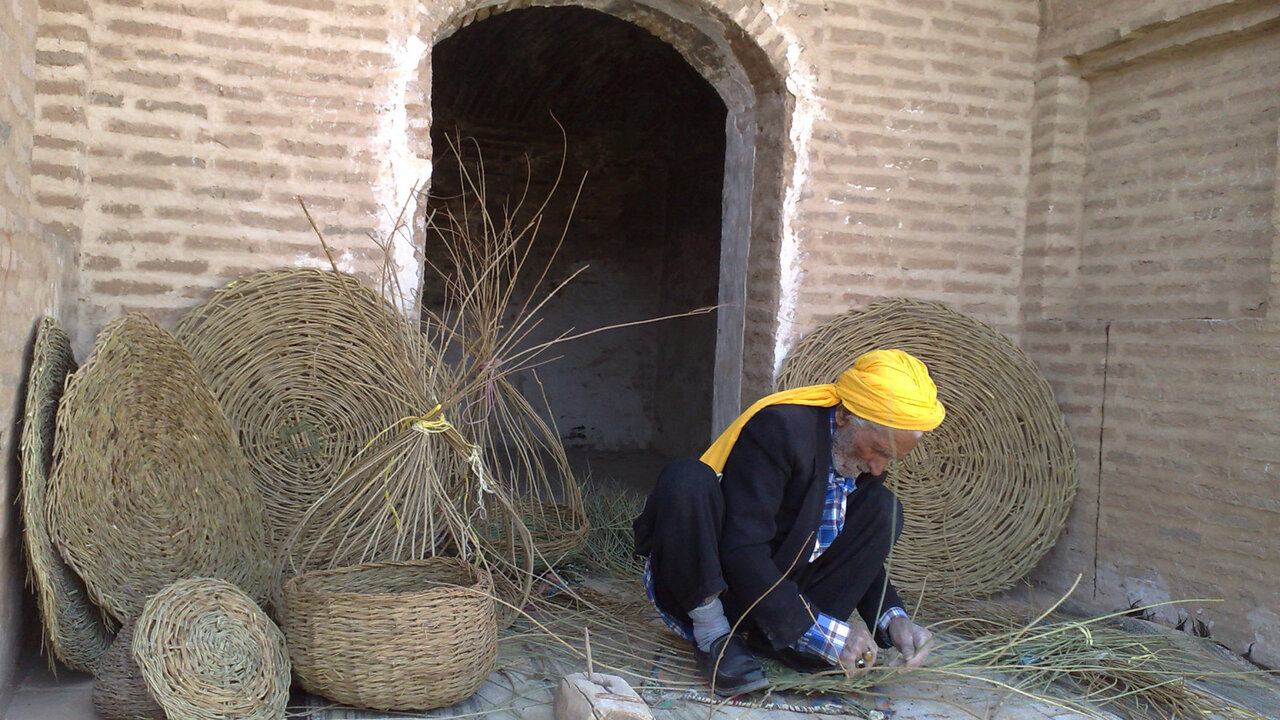Persian handicrafts: Arghavan-bafi

TEHRAN – Iran boasts a vast array of plant species, contributing to the diversity of mat weaving across its regions and cities. In every area, unique weaving techniques have developed to cater to the abundance of local flora.
Torqabeh is a region located just 20 kilometers away from the city of Mashhad. Known for its abundance of Eastern redbud trees, Arghavan in Persian, the locals have made a tradition out of weaving intricate baskets using the thin stems of these trees. These beautiful weaves are commonly referred to as Arghavan-bafi.
Each year, during either spring or autumn, the stems are carefully collected. When it comes to cutting and gathering stems, it's crucial to handle these plants with care, as they are quite delicate. If you make a mistake when cutting a tree, it can lead to the tree drying out, which is far from desirable. To avoid any negative consequences, it is essential to exercise extreme caution and execute every cut with precision. Any slightest mistake can lead to a serious problem.
Once the stems have been collected, they are set aside in a moist environment for a sufficient amount of time to increase their flexibility for weaving. The artisans deftly interlace the plant stems to create a pattern of vertical and horizontal strands, known as the warps and wefts. The majority of these items are typically found in round or oval shapes. To improve his grip, the weaver uses his toes to grasp the stem, and by controlling the number of rows, he customizes the size and texture of the basket.
To achieve a faded color effect, the stems are occasionally boiled in pots. The Arghavan tree is naturally dark brown in color. The local population has received the traditional knowledge of making mat weaves and Arghvan-bafi from their ancestors. They make a living out of crafting these exquisite pieces. These mat baskets are incredibly resilient and have greater longevity than other mat weaves. Prior to the widespread adoption of plastic, Arghavan-bafi containers were commonly used and are now a viable alternative to plastic baskets. You can clean them using water and regular cleaning agents. Baskets are the cornerstone of Arghavan-bafi’s business and are available in a variety of types including fruit baskets, flower baskets, and rice cultivation baskets.
Handicrafts similar to Arghavan-bafi can be found in different cities and regions of Iran, where local plants' stems or branches replace Arghavan. The artistic tradition of crafting with natural materials is widespread in the country, allowing each community to create their unique variations of cultural artifacts. A traditional craft practiced in different regions of Iran is the art of weaving baskets. In various provinces, different materials are used to create these baskets, showcasing the unique cultural influences of each region.
In Mazandaran, a province in the north, the craft is called “Bambo-bafi,” while in Gilan they refer to it as “Morva” or “Cham-bafi.” In East Azarbaijan, the craft utilizes the Sousan tree, in Marand, wheat stems are used, and in South Khorasan, baskets resembling Arghanvan baskets are created using willow, prunus, and tamarisk stems. This traditional craft highlights the diversity and richness of Iran's cultural heritage and is a testament to the skill and creativity of Iranian artisans.
ABU/
